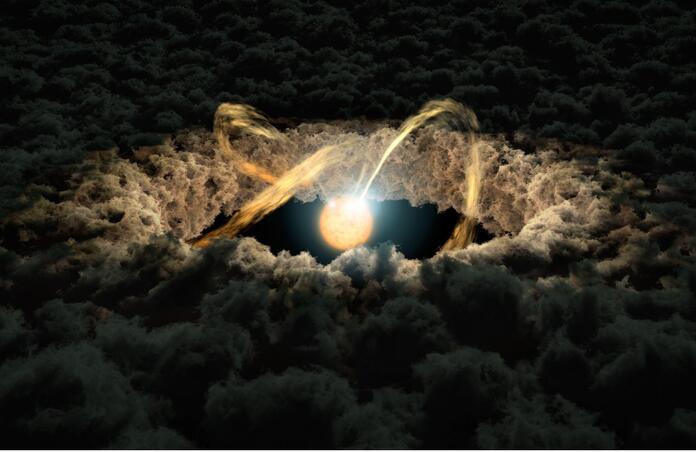Researchers Present New Mechanisms that Could Explain Missing Carbon Monoxide in Protoplanetary Disks

Protoplanetary disks are ring of stellar material that orbit young stars, early in their life cycle. Within this gas, matter will eventually accrete to form the planets that will make up the star’s own system. Often, observations pertaining to protoplanetary disks are based on the abundance of carbon monoxide (CO) in these systems. This was chosen as the gas was bright and easily observed, allowing it to act as a so-called ‘tracer’. As a result, many techniques that are used to determine the properties of protoplanetary disks hinge on the observed CO matter. However, observations of these systems and their processes show a greater depletion of CO abundance than anticipated by current models, yielding undeterminable uncertainties in all values derived from these techniques.
On the 22nd of August, a paper led by Diana Powell was published outlining certain amendments they had made to models that yield promising outcomes more in line with what is observed. Their approach to these amendments was driven by their previous experience with studying gas-depletion in planetary atmospheres, leading them to consider primarily CO ice formation. This is significant as while gaseous CO is luminous and visible to most high-end telescopes, the solid phase is comparatively dim and hence invisible, even to the most sensitive telescopes available. As such, Powell et al theorised that this discrepancy may be explained by gaseous CO changing phase.
The mechanism they derived describes the microprocesses undergone by the gaseous CO that would allow for such a change to occur. Initially, the midplane of the disk is supersaturated with CO gas, allowing for it to randomly nucleate into solid ice crystals. This however depends on an exceeding high supersaturation and is thus an unlikely process to occur consistently. Fortunately, once these crystals have been established, the remaining gas is able to condense onto their surfaces, quickly depleting the supply of CO within this central region. From here, concentration falls, and nucleation becomes statistically impossible. This drives gas from the outer regions of the disk towards this low concentration region, where it is immediately condensed, maintaining a consistent concentration of vapour. Over time, this reduces the abundance of gaseous CO throughout the disk.
Of particular note is the influence of the inclusion of the Kelvin effect on these processes. This is the phenomenon by which the vapour pressure of a curved surface is greater than that of a flat plane. This is due to the average surface attraction of fluid particles to be lower for curved surfaces, resulting is greater evaporation and condensation rates of these curved fluids, at small scales, which makes nucleation much more challenging, but condensation much easier, resulting in the mechanism described.
As the crystals coagulate over time, they drift inwards towards the host star, allowing the ice to settle itself in an optically thick, cooler region of the protoplanetary disk. This shields the ice both from evaporation, as it is too cold, and from incoming ultraviolet radiation, which could have contributed to the ice returning to a gas phase via photo desorption.
Since revising their models, Powell et al have tested it on four of the most studied protoplanetary disks and returned results much more in line with what could be observed, potentially finally resolving the inaccuracies that had been plaguing the field. From here, Powell has stated she plans to continue this study by exploring the evolution of other notable molecules within protoplanetary disks, however. Now with the advent of significantly more powerful observational equipment, such as the James Webb telescope, she hopes we could now detect ice in these fields and confirm this and further theories.
--
Cover Image: NASA/JPL-Caltech
Journal Source: D. Powell et al, Depletion of gaseous CO in protoplanetary disks by surface-energy-regulated ice formation, Nature Astronomy, 2022
